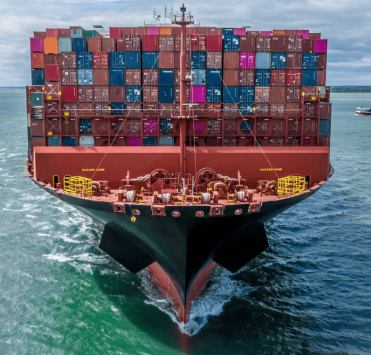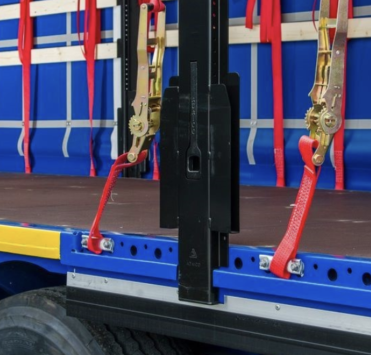All about the bill of lading: why is it needed and what problems can it solve?

In the conditions of global trade, container transportation to Ukraine plays an increasingly important role. Thanks to sea transportation, businesses and individuals can import and export a wide range of goods, from clothing and footwear to industrial equipment. Bill of Lading (B/L) is one of the key documents, without which a safe and transparent transaction is impossible.
A bill of lading is not just a formal “piece of paper”. It determines the ownership of the cargo, confirms the acceptance of goods for transportation and serves as the main proof of all conditions of transportation. Figuratively speaking, a bill of lading is a “passport” for your cargo in the world of maritime logistics.
In this article we will look at:
- What is a bill of lading and why it is so important in transportation to Ukraine.
- The main functions of a bill of lading (B/L).
- Mandatory information that must be entered into the bill of lading.
- Differences between House Bill of Lading (HBL) and Master Bill of Lading (MBL).
- Rules of filling in and who is responsible for correctness.
- Typical errors, their consequences and solutions.
- Practical advice and answers to frequently asked questions (FAQ).
What is a Bill of Lading and its importance in transportation to Ukraine?
Definition and essence of Bill of Lading
Bill of Lading (B/L) is a legally significant document that:
- Confirms the contract of carriage between the sender (Shipper) and the carrier (Carrier).
- Serves as a receipt for the goods (accepted by the carrier for transportation).
- Performs the function of a document of title, giving the B/L holder the right to dispose of the cargo: redirect, sell en route, etc.
Bill of lading has legal force in most countries of the world, including Ukraine, and is recognized as the main evidence in case of legal disputes related to logistics and supplies. That is why it is so important to properly execute and store it.
The role of the bill of lading in container transportation to Ukraine
- Customs clearance: For importation of goods into Ukraine, the bill of lading is one of the main documents on the basis of which the compliance of data on the cargo and declared value is checked.
- Release of cargo at the port: Without a properly executed bill of lading (or its electronic equivalent) the consignee will not be able to pick up the container at the port.
- Legal protection: In the event of late delivery, damage or loss of cargo, the bill of lading is a basic source of evidence in the courts and when dealing with insurance companies.

Main functions of the bill of lading
Confirmation of transportation
When a carrier issues a bill of lading, it indicates that it has undertaken to deliver the specified cargo from the port of origin to the port of destination. This document is essentially the formal “start” of the logistics process.
B/L
The B/L records the key indicators (number of pieces, weight, name of goods) that the carrier has accepted from the shipper. If the actual condition of the shipment on arrival differs from that described in the bill of lading, it becomes the basis for claims and litigation.
Goods Disposition Function
This is the most unique and important function of a bill of lading. The owner of the original B/L Bill of Lading is given the right to dispose of the cargo while it is in transit:
- Divert to another port.
- Sell the cargo (transfer the bill of lading to the new owner).
- Transfer the B/L to a bank to secure obligations, etc.
Remedy
In case of damaged, missing or undelivered goods, it is the bill of lading that acts as proof of what goods were accepted by the carrier and under what conditions.
Mandatory information that must be specified in the bill of lading
To container transportation to Ukraine passed without complications at customs and in the port of destination, the bill of lading (Bill of Lading) must be detailed:
- Carrier (Carrier): the name of the company or shipping line that actually carries out the transportation.
- Shipper: The organization or person who delivered the goods to the carrier.
- Consignee: The person or company authorized to receive the shipment at destination.
- Notify Party: The contact person/company to be notified of the arrival of the shipment.
- Shipment Description: detailed information about the name of the goods, number of pieces, weight, volume, labeling. Sometimes HS codes are given if required by customs.
- Container: type of container, its number.
- Port of loading and port of discharge: for example, “Port Shanghai → Port Chernomorsk.
- Terms of delivery (Incoterms): FOB, CIF, CFR, EXW, etc. Must coincide with the condition in the commercial contract.
- Date and Place of Delivery B/L: records the moment when the goods are actually accepted by the carrier.
It is important to make sure that all these data strictly correspond to the commercial documents (invoices, packing lists, etc.), otherwise there may be delays in customs clearance in Ukraine.
House and Master bills of lading: what is the difference?
House Bill of Lading (House B/L, HBL)
- Who issues: A freight forwarder or logistics operator who does not own the vessel but enters into a contract of carriage with the shipper.
- Role: Forwarder - shipper relationship.
- Feature: The Shipper and Consignee fields are usually populated with the actual shipper/consignee. The Freight Forwarder acts as “carrier” to the Shipper, but receives the Master B/L from the shipping line itself.
Line Bill of Lading (Master B/L, MBL)
- Who issues: Directly to the shipping line (Carrier) owning the containers and vessels.
- Role: A shipping company-charterer (often a freight forwarder) relationship.
- Feature: Shipper may be the freight forwarder and Consignee may be the same logistics company importer under the terms of the transaction. Master B/L has first priority in disputes.
Filling rules and responsibilities
Who enters the data?
- Shipper: provides accurate information about the goods, including weight, volume, number of pieces and consignee contacts.
- Forwarder (House B/L): executes the document and verifies that all information is correct.
- Shipping line (Master B/L): issues a master bill of lading based on the data received.
Critical points of execution
- Matching information between bill of lading, invoice and packing list.
- Correct reflection of Incoterms - a mistake here can lead to confusion about freight and insurance issues.
- Up-to-date company names and details without typos.
- Release date: sometimes critical for banks (in case of letter of credit) and customs (in case of inspections).
Liability for errors
- The shipper bears the risk of inaccuracies in the description of the shipment, which can lead to fines.
- The forwarder or carrier may also be liable if the documents are grossly inaccurate and cause losses to the customer.
- Insurance claims: if the B/L is filled out incorrectly, the insurance company may refuse or reduce the amount of payment.
Typical mistakes and how to avoid them
- Miscommunication in the number of places: if the bill of lading shows 50 boxes and the invoice shows 48 boxes, customs will demand an explanation.
- How to avoid: carefully check the data in the final documents before releasing B/L.
- Incorrect Consignee name (Consignee )**: if “Company A” is written instead of “Company A Ltd”, there may be difficulties when releasing the cargo.
- How to avoid: use only those details that are officially registered.
- Inconsistency of Incoterms: CIF in the contract and FOB in the bill of lading is a reason for financial and legal claims.
- How to avoid: check the compliance of delivery terms before signing each document.
- Lack of Notify Party (where it is important)**: cargo may be delivered but no one will be notified that the container has arrived.
- How to avoid: provide the warehouse/responsible person's contacts in advance.
- Loss of the original bill of lading: it is not possible to release the shipment without it without complicated procedures (Letter of Indemnity, Telex Release).
- How to avoid: keep originals in a safe place, use electronic B/L if available from the carrier.
Practical tips for successful logistics
Choose qualified freight forwarders
Especially if you do not have extensive experience in international logistics. Professionals will help you to properly execute House B/L, check the correctness of data, interact with shipping lines and port services in Ukraine.
Insure your cargo
Bill of lading protects your rights, but does not eliminate the risks of force majeure (natural disasters, accidents, etc.). Timely insurance covers possible losses and gives you additional peace of mind.
Keep track of changes in Ukrainian legislation
Customs legislation and rules of port formalities may change. Follow official sources or consult legal and logistics specialists.
FAQ (Frequently Asked Questions)
Question 1: Is it possible to change the Consignee on a Bill of Lading after it has been issued?
Answer: It is possible, but the procedure can be complicated. You need to contact the carrier, make corrections, or issue a new B/L. Sometimes a Telex Release is used if the shipment is still in transit. However, such amendments often come with additional costs.
Question 2: What if the original bill of lading is lost?
Answer: The carrier will require guarantees (Letter of Indemnity) and usually bank support. Telex Release is an option if all parties agree. But this takes time and sometimes money.
Question 3: What is the difference between Negotiable B/L and Non-negotiable?
Answer: Negotiable B/L (negotiable) can be transferred to other parties through endorsement, thus changing the owner of the cargo. Non-negotiable (registered) does not allow assigning the right to receive the cargo to third parties.
Question 4: Which ports in Ukraine are the most popular for container transportation?
Answer: Odessa and Chernomorsk are the main sea gates. Each port has its own specifics and infrastructure. The choice usually depends on the shipping line and availability of feeder services.
Question 5: Why is Master B/L considered more “official” than House B/L?
Answer: The Master Bill of Lading is issued directly by the shipping line owning the vessels. It is the “primary” document that reflects the legal relationship between the cargo owner (or his representative) and the actual carrier.
Conclusion
Bill of lading is a fundamental document in the sphere of container transportation in Ukraine and all over the world. The speed, safety and economic efficiency of deliveries depend on the correctness of its filling and competent logistics strategy. Failure to comply with the rules of registration is fraught with delays, fines and difficulties in the release of cargo.
To succeed:
- Partner with experienced freight forwarders and reliable shipping lines.
- Thoroughly check all data (Shipper, Consignee, weight, number of pieces, Incoterms).
- Plan customs clearance and insurance in advance.
- Constantly follow the changes in the legislation of Ukraine and international transportation practice.
Entrust your cargo to a team of professionals from Save Pro Solutions! We offer comprehensive logistics solutions: from selection of the optimal sea line and Bill of Lading to insurance and full support at all stages of transportation.
Our goal is to make the delivery of your cargo as transparent, reliable and cost-effective as possible.
Contact us today to receive a customized offer and make sure that quality logistics can be affordable and comfortable!









